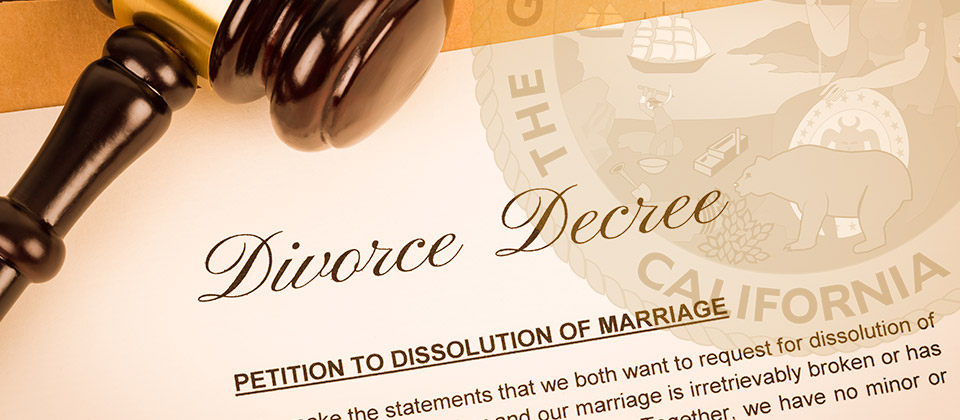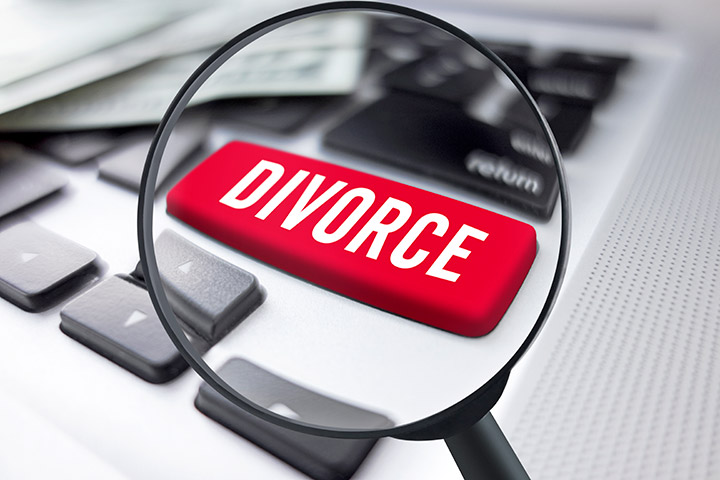Guide to California Divorce Records

Divorce is a huge event that can alter your life in several ways. Depending on the dissolution terms and life circumstances, ex-spouses may need to access their California divorce records occasionally. Some common uses for these documents include amending alimony, child support, or proceeding with future marriages.
These records are publicly available in California, but with a few caveats. They're only accessible from a few places, and the included information can vary based on which office you visit.
Mail orders also have relatively long processing times, which isn't compatible with the time-sensitive tasks that require divorce records. For these reasons, getting things right the first time is essential.
What are California Divorce Records, and How are they Stored?
California divorce records are a collection of documents detailing the process and results of a divorce. The amount of information in a divorce record is proportional to the complexity and length of the case.
They're maintained by the California Vital Records Department and the County Superior Court where the divorce occurred. However, the state only stores records from 1962 through 1984, making its database primarily used for genealogical study or analysis. Individuals seeking divorce records for personal use typically go through the local county court.
In particular, these records are sought out for information on asset distribution, spousal payments, or general proof of divorce. California has two types of divorce records: . Certificate of Record and Actual Divorce Decree.
Certificate of Record

The Certificate of Record typically keeps basic information, including:
- Names of the parties involved
- The case number
- The date of the divorce
- The county where the divorce was filed
However, it does not provide detailed information about the divorce settlement or other sensitive information. This certificate is often used for informational or verification purposes rather than obtaining detailed data for court proceedings. It may be required for specific legal or administrative processes, such as updating marital status or changing a legal name.
"Actual" Divorce Decree
In California, the "actual divorce decree" refers to the final court document that, once signed by the judge, legally terminates the marriage. The decree is often called a "Judgment of Dissolution of Marriage" or the "Divorce Decree".
You should request the actual divorce decree if you want to know the terms and conditions of the divorce. The primary document in a California divorce decree is form FL-180. However, numerous attachments go along with it. The key components typically included are:
- Legal Termination: The decree formally ends the marriage, stating that the parties involved are no longer married. This does not allow ex-spouses to remarry right away, as California has a minimum statutory six-month waiting period.
- Division of Assets and Debts: This section outlines who's responsible for shared assets and debts. For example, it decides who owns a house and how to split the mortgage payments. Child custody is NOT decided here.
- Spousal Support: Alimony is when one spouse must pay the other to cover living expenses. California has "rehabilitative" alimony because it's only meant to last while the other spouse becomes self-supporting. California doesn't have automatic alimony.
- Custody and Visitation: For couples with children, the decree addresses issues of child custody, visitation schedules, and any child support obligations.
- Miscellaneous Terms: Most divorces must address unique aspects such as provisions on insurance, airline miles, pets, and future income.
The divorce decree is a vital document. Rather than scramble to order one when needed, you should keep a certified copy in a safe and accessible place.
Omissions and Errors in Divorce Records
While rich in sensitive data, California divorce records pose minimal risk for identity theft. The courts require proof to access documents containing more dangerous details, as applicants must have a degree of connection with the divorcees.
Nonetheless, ensuring accuracy is vital to avoid legal and financial complications in the future. Errors may make it harder to locate the record or contest specific sections in the future.
California Divorce Statistics

Tracking divorce statistics is crucial for understanding societal trends and informing family law policies. They provide insight into relationship dynamics within the state and how they're affected by economic and social factors.
California is one of five states that doesn't disclose divorce rates with the Centers for Disease Control. The state's figures come from individual county reporting and surveys.
- Divorce Rate – The California divorce rate rose moderately between . 2021 (8.9 percent) and 2022 (9.2 percent). However, overall divorce rates have significantly dropped in the past two decades.
- Average Divorcing Age – The median divorce age for first marriages is 30.5 years old for men and 29 for women. Additionally, women initiate more often, with the divorce rate growing dramatically alongside the education level.
- Highest Divorcing County – Shasta County has the highest divorce rate in the state at 13.8 percent, 1.5 times higher than the average.
- Lowest Divorcing County – Santa Clara has the lowest number of divorces at 7.4 percent. While this is a low figure compared to the rest of California, it is close to the national average.
- Most Reported Reasons for Divorce – California allows two methods for divorce: irreconcilable differences and incurable insanity. The latter has a complicated burden of proof, but the most frequently cited reasons for irreconcilable differences are money disagreements, infidelity, domestic abuse, parenting styles, and in-law troubles.
- Average Length of Marriage – California marriages tend to last 8.9 years, a year longer than most unions in the country. California has a six-month waiting period on divorce filings, which may pad this statistic.
- Divorces with Children - 31.8 percent of marriages include children or dependents under the age of 18. Children are three times more likely to stay with their mother than their father in these cases.
- Remarriage Rate – California divorcees are very likely to remarry. 75 percent of people enter another marriage within 10 years of the first, and men are much more likely to remarry than women.
How to Find California Divorce Records

The California Department of Public Health-Vital Records distributes Certificates of Record for marriages between 1962 and June 1984. It accepts requests through mail or in person. There is a $16 fee per copy, which requires a check or money order payable to "CDPH Vital Records".
To complete this process, you'll need the following information:
- Full names of divorced parties at birth
- Current full names of divorced parties
- Date and county of divorce
- Relationship with divorced parties and reason for request
Mail orders must include form VS 133-B, a photocopy of a valid government ID, and the appropriate fee. The envelope should be addressed to:
California Department of Public HealthVital Records MS 5103
PO Box 997410
Sacramento, CA 95899-7410
It may take upwards of 6 Months for California Vital Records to process a divorce record. So, even if you don't need a complete Actual Divorce Record, visiting the county's superior court in person may be more prudent.
The walk-in process requires all the same information; however, payment can be made with most major credit cards or cash. Additionally, you can expect same-day processing for most record searches. We recommend calling the county beforehand and checking if their office has specific requirements.
Unfortunately, there are no state-sponsored methods for online applications. Some counties let you access court indexes through the government site or schedule appointments online. For example, Los Angeles County has an ordering system on its website, but it requires the case number.
Superior Court Contact Information by California County
As with all government agencies, the process can be lengthy, complex, and vary between counties. Preparing county-specific information is recommended, but that means knowing who to call. To this end, we've listed the Superior Court office numbers for the top ten largest California counties.
| County | Phone Number |
|---|---|
| Los Angeles County | (213) 633-6363 |
| San Diego County | (619) 450-7275 |
| Orange County | (657) 622-5800 |
| Riverside County | (951) 777-3147 |
| San Bernardino County | (909) 708-8678 |
| Santa Clara County | (408) 882-2100 |
| Alameda County | (510) 263-4300 |
| Sacramento County | (916) 874-7775 |
| Conta Costa County | (925) 608-1000 |
| Fresno County | (559) 457-2000 |
FAQ on Divorce Records in California
What's the difference between a divorce decree and a divorce abstract?
A divorce abstract is a single-page document used as proof of divorce. It doesn't include the exact details of the divorce nor any specific supporting papers. A divorce decree is a far more comprehensive collection of information encompassing all documents presented during the divorce process, such as child custody agreements and alimony.
Do I need my divorce records to remarry in California?
Yes, California requires you to present at least a divorce abstract when applying for another marriage license. This requirement stands even if your previous spouse is deceased. However, applicants have a large window to get the record as California enforces a six-month waiting period before remarriage.
Do I have to pay a fee to get my divorce record in California?
Superior Courts typically charge a minor search fee for your divorce records and extra for any copies. This cost varies by county but typically ranges between $15 and $20. The State Vital Records Department has a standard fee of $16 for each copy.
Can I change the terms of a divorce decree?
Yes, you must bring your case to the presiding state district courts of appeals, where it was initially judged. Overturning divorce decrees in California is challenging as you must prove the judgment misapplied laws or was made in bad faith. However, modifications are much more straightforward as you must verify that your circumstances have changed.
Can anyone request a divorce record in California?
California divorce records are public information, but that doesn't mean anyone can request the complete record. The courts require that interested parties have a close relationship with the divorcees or act in a legal capacity. Access to complete divorce records is usually kept to family members who were part of the divorce or those directly related.
How long does receiving a copy of a divorce record in California take?
Visiting the courts or state office in person can get your records on the same day. In contrast, ordering through mail can take longer than six months, and that doesn't consider shipping speeds.
